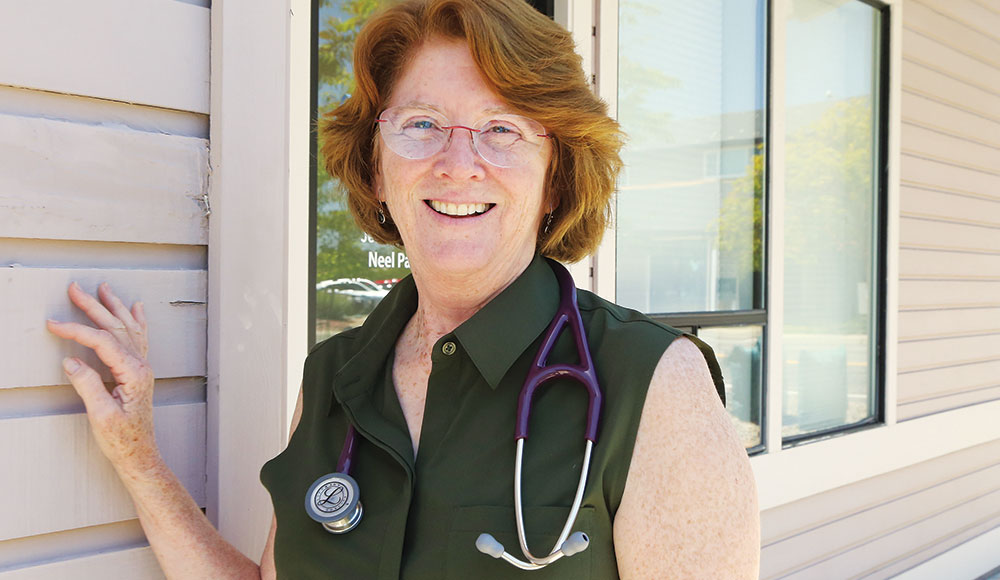Monthly subscription services have become commonplace in our lives, with everything from magazines and streaming services to clothing bundles, specialty flowers and pet care boxes. But a member-based monthly service is now coming to an unexpected place: your doctor’s office.
A relatively new model for family physicians called Direct Primary Care is rapidly emerging. In this scenario, family physicians charge patients a monthly, quarterly or annual fee. According to the American Association of Family Physicians, this fee covers all or most primary care services, including clinical and laboratory services, consultative services, care coordination, and comprehensive care management.
Dr. Jeannine Rodems is the practice lead at Santa Cruz Direct Primary Care. After getting her undergraduate degree at UC Santa Cruz, she went to medical school at UCLA. She had been in private practice in Los Angeles, but felt dissatisfied and unfulfilled with the “onerous demands” of insurance companies that resulted in less time talking to and working directly with patients and more time spent on paperwork and regulatory burdens. In response, she founded Santa Cruz Direct Primary Care in 2016 and never looked back.
“Santa Cruz Direct Primary Care was founded to provide a simpler model of healthcare to deliver what matters most to patients—excellent care, personalized service, access when you need it, and affordability,” she says.
At Santa Cruz Direct, care is provided under a monthly fee, based on age. And here’s the twist: they don’t take insurance.
While that may sound counterintuitive or even a bit scary, Dr. Rodems makes an important distinction: “Health insurance is not health care.”
“And besides,” she adds, “many people have enormous deductibles or are under-insured, which creates potentially high risk for big surprising bills if someone needs an emergency room visit.”
In the Direct Primary Care model, the monthly costs are predictable. But the real advantage for patients can be summed up in one word: access.
In the insurance-based model, patients can find themselves waiting several weeks if not months for a basic appointment. And many times, that visit amounts to a terse 5- to 7-minute conversation with a doctor who is looking less at the patient and more at a tablet or computer because they need to capture insurance codes. They aren’t truly listening to or connecting with the patient to understand and resolve their issue. Even worse, that visit can often end with a referral to a specialist, and those appointments are even harder to come by—which further delays patient care.
Dr. Rodems founded her practice as a response to these challenges, which can be as frustrating for doctors as they are for patients. “We can see more patients at a lower cost without insurance,” she says.
This is due to the fact that the staff, operations and back-office systems needed to process and file insurance claims actually diminishes the care while increasing the cost, something the Direct Care model strives to eliminate.
“We aren’t beholden to the insurance world, so we don’t have all the overhead,” Dr. Rodems says. “This keeps costs down. It also enables us as doctors to get back to our roots…like ‘old-fashioned’ family physicians. We get to know you. There is trust and continuity. We can step back and really listen. We can coordinate care, manage complex conditions and advocate for our patients. The insurance-based, fee-for-service model doesn’t support that.”
At Santa Cruz Direct Primary Care, appointments are set at 30- to 60-minute increments to ensure unhurried visits and adequate time to address patient concerns and medical decision-making. Email, texting, phone and after-hours access to physicians is provided and included with the monthly fee. Collaboration with patients is prioritized and specialty care is possible due to the time the doctors can dedicate to each person’s unique needs.
Direct Care proponents believe that providing more time for detailed discussions with patients results in better long-term health, better treatment decisions, and better overall well-being for patients and their families. The Direct Care model also can provide a broader range of socio-economic groups with access to care at a lower cost than the insurance-based model.
A similar but slightly different spin on the “monthly doctor subscription” model is called “Concierge Care.” The main difference from Direct Primary Care is that Concierge Care tends to cater to higher-income populations and may continue to accept insurance and bill a patient’s insurance company for covered services. This creates higher overhead, which is why Concierge Care can be significantly more expensive than Direct Primary Care.
Dr. Rodems says that she has a variety of patients, but they all have one thing in common. “They have a deep desire to better connect with their doctor,” she says. “They want someone they can trust. Some patients have complex medical management needs. They need access and advocacy. That’s precisely what we provide.”
For more information about Santa Cruz Direct Primary Care, visit santacruzdpc.com.
For a nationwide map of Direct Primary Care providers, visit mapper.dpcfrontier.com.












